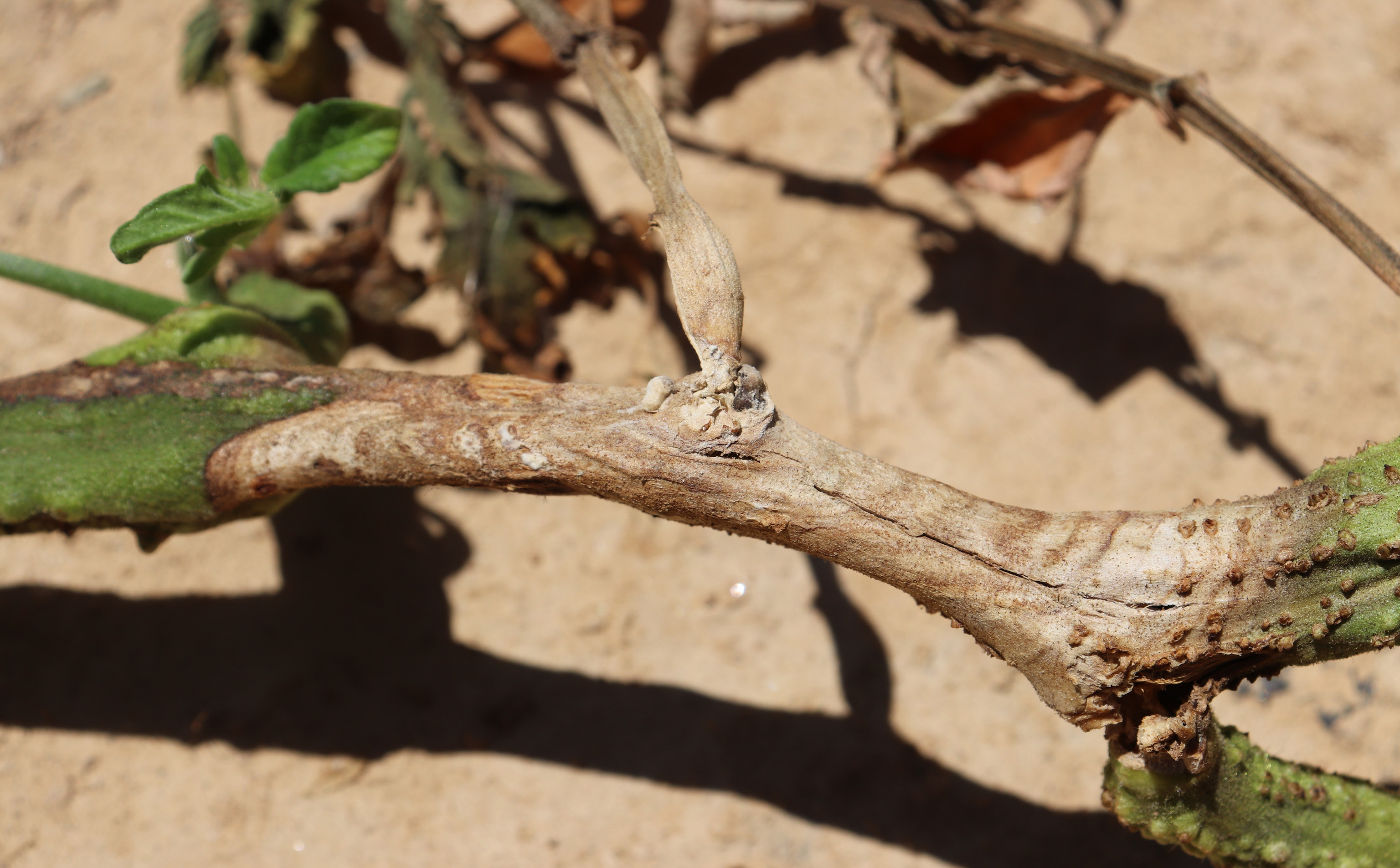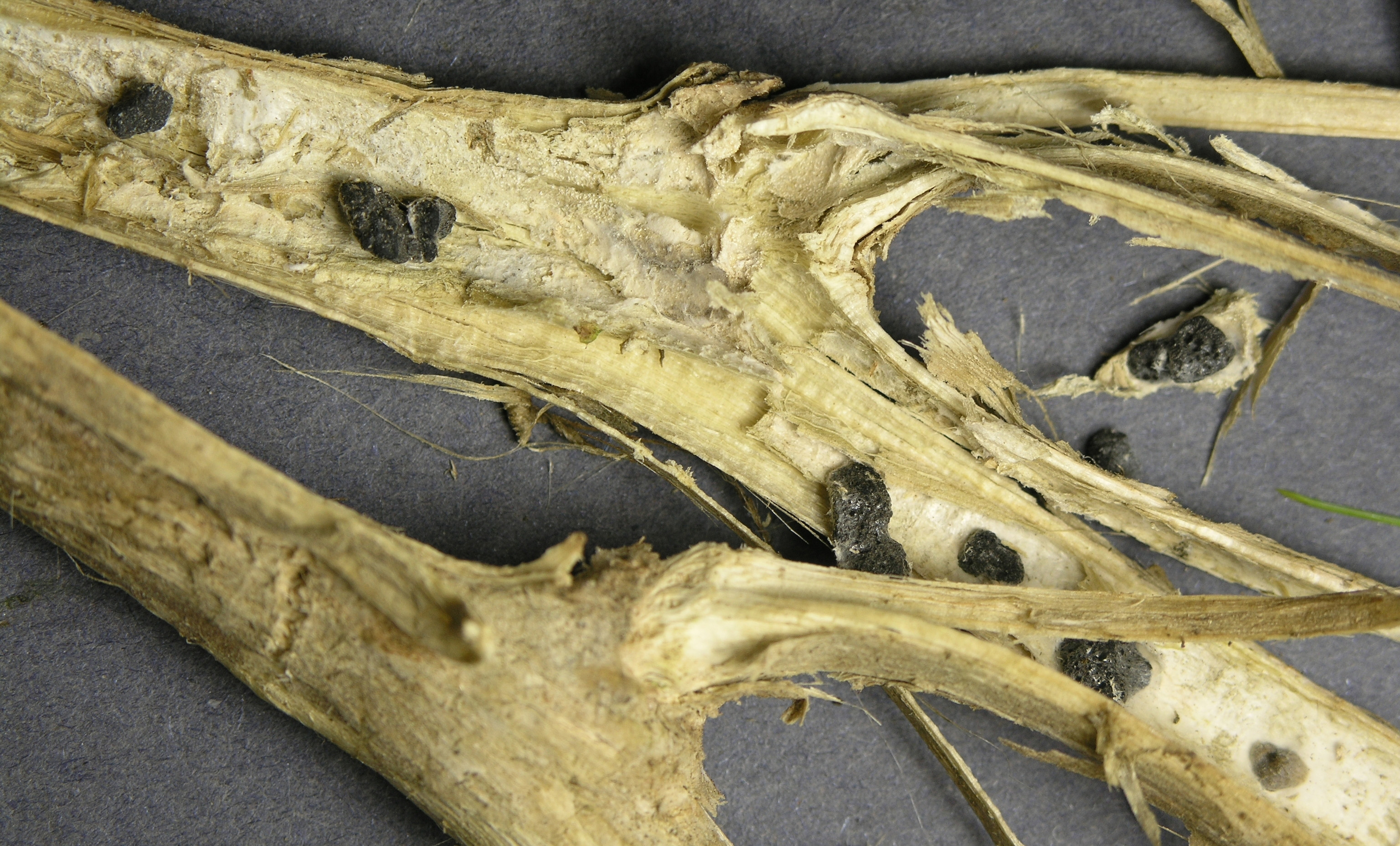Timber Rot or White Mold of Tomato
Return to Diseases
Timber rot or white mold (Sclerotinia sclerotiorum) primarily affects the main stem; lesions can occur at the soil line or several inches above ground. Under favorable conditions, lesions elongate and become tan with a faint zonate pattern within the symptomatic area. Eventually, stems become girdled and entire plants wilt or collapse suddenly. Infected plants rarely survive. Splitting the stem of symptomatic plants longitudinally reveals one or more irregular-to-cylindrical, black fungal survival structures (sclerotia), a key diagnostic feature of this disease. Timber rot is more common in late spring during periods of cool, wet weather.

Timber rot on stem.
(Photo: Rebecca A. Melanson, Mississippi State University Extension, Bugwood.org)

Timber rot sclerotia.
(Photo: Bruce Watt, University of Maine, Bugwood.org)
Management:
- Provide adequate spacing and good drainage
- Deep plow or bury crop debris at the end of the growing season
- Rotate with non-host crops
- Avoid movement of infested soil to clean fields
